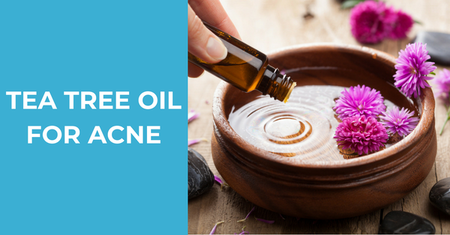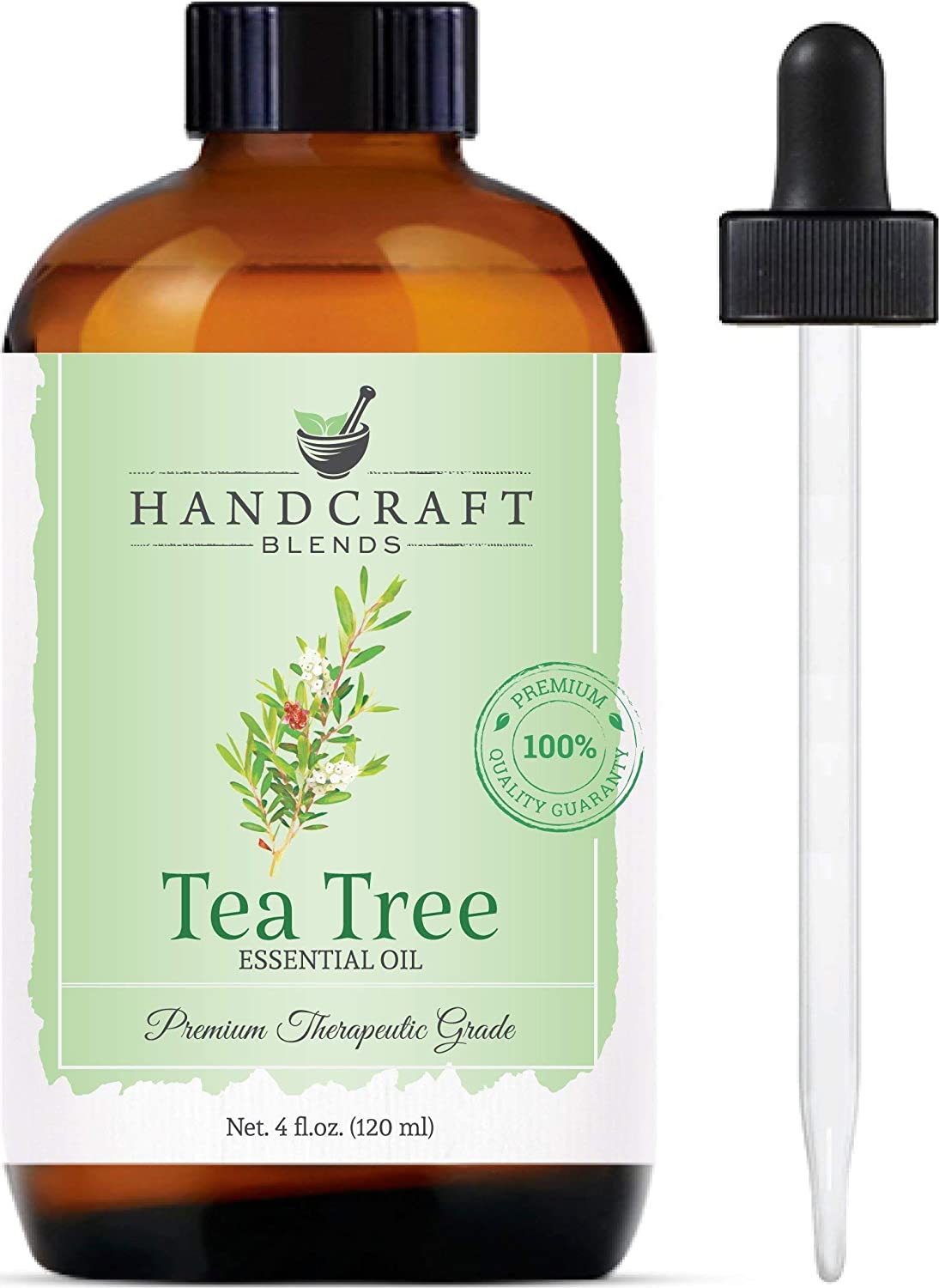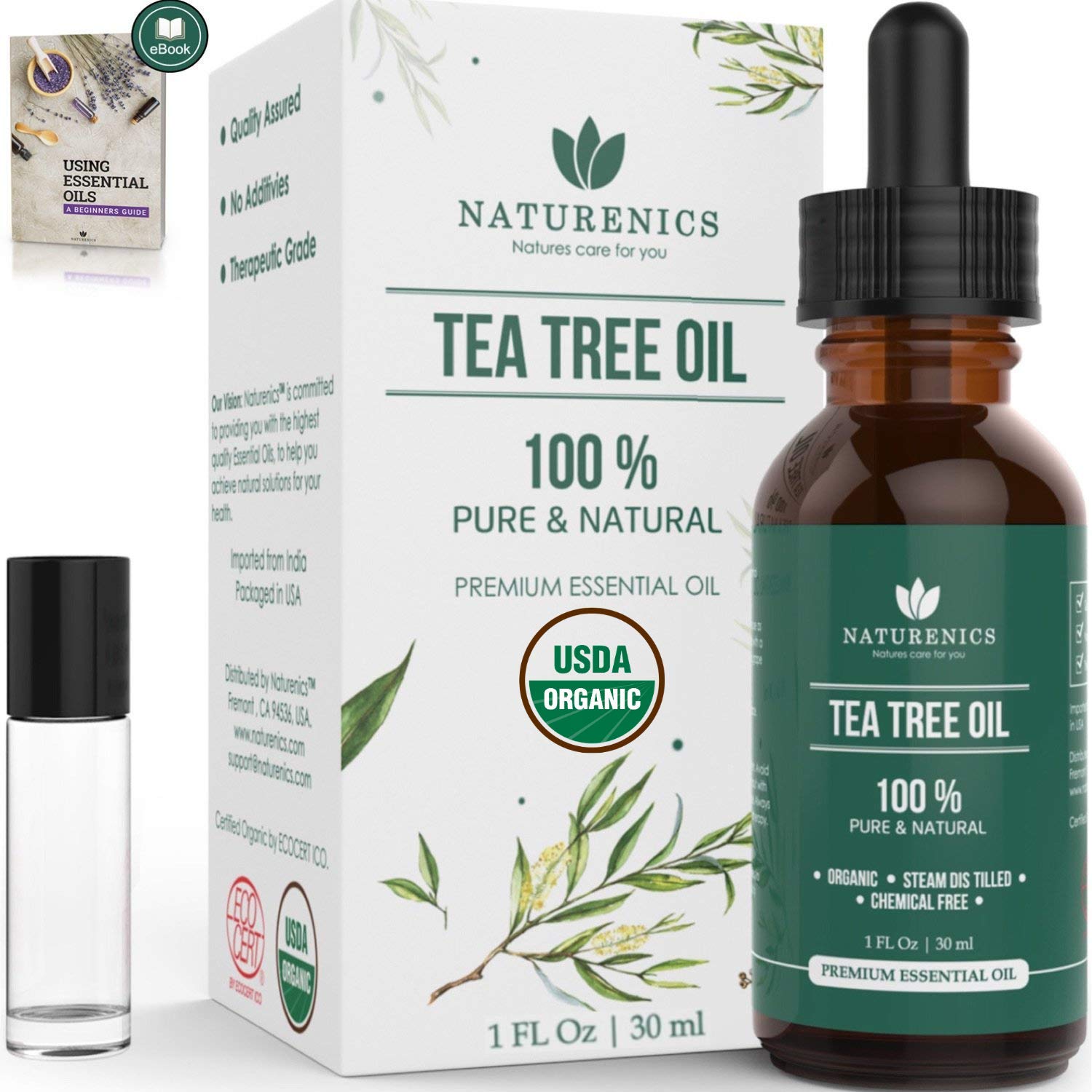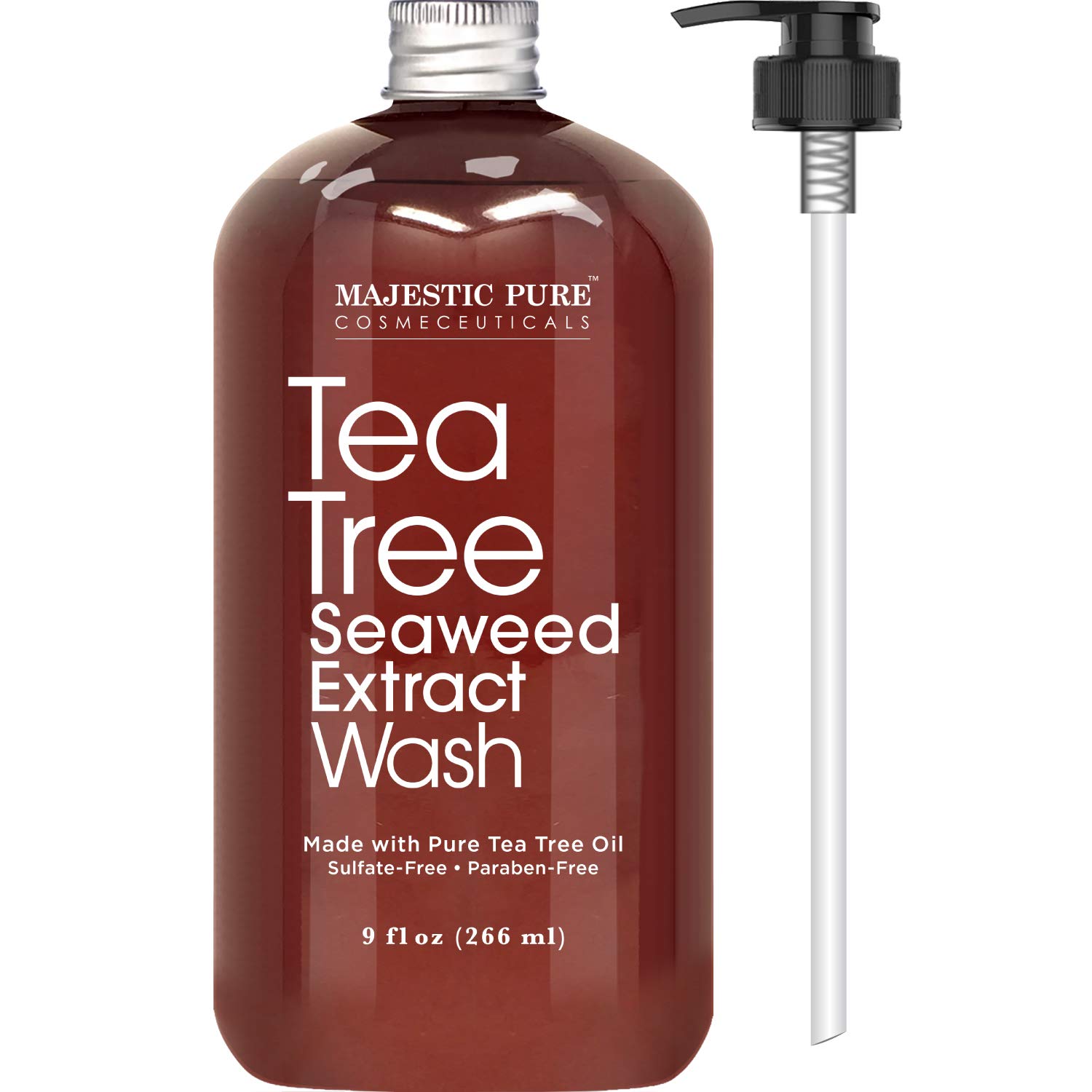Contents
Discovered in Australia, tea tree oil has been used as a home remedy to fight various skin diseases for hundreds of years, and has become a staple treatment for acne-prone skin.
Its antibacterial, antifungal and anti-inflammatory properties help treat mild to moderate acne. Let’s take a closer look at tea tree oil and find out how it can be used to treat acne, how to apply it most effectively, and how you make sure you choose the right product!
Tea Tree Oil originates in Australia, mainly from the Northeast of New South Wales and Queensland, where it is isolated from the leaves of the tea tree, also known as Melaleuca Alternifolia.
The misleading name is likely to date back to the days of Captain James Cook, who was missing his beloved English Tea when he arrived in Australia. Searching for an alternative he found the leaves of the Tea Tree to be an excellent substitute – but didn’t know about all the health benefits he discovered with it.
How does it work
Since then, the powers of the essential tea tree oil have been investigated.
It has proven to be one of the most effective antibacterial essential oils and many acne-sufferers use tea tree oil for this reason alone. Because of its natural benefits, it is found in different products like shampoos, massage oil, cosmetic products but also in laundry detergents and cleaning products.  The main active ingredients of Tea Tree Oil are sesquiterpenes, monoterpenes, and terpene hydrocarbons. Those components are responsible for the antibacterial, antiviral, and antifungal characteristics that prevent infections and kill bacteria as well as fungi that are responsible for acne outbreaks.
The main active ingredients of Tea Tree Oil are sesquiterpenes, monoterpenes, and terpene hydrocarbons. Those components are responsible for the antibacterial, antiviral, and antifungal characteristics that prevent infections and kill bacteria as well as fungi that are responsible for acne outbreaks.
If you want to go more in-depth about the ingredients, then here you can find a scientific article about the effect and active ingredients of tea tree oil.
BENEFITS
-
- Reduces redness and irritation of the skin (anti-inflammatory)
- Helps to shrink pimples faster (anti-inflammatory)
- Prevents infections and acne outbreaks by killing bacteria and fungi which can cause acne when mixed with dead skin cells (antibacterial)
- Helps to clean the skin and break up oil or dirt that is clogging pores (solvent)
- Can help prevent acne scars. Due to its anti-inflammatory, antibacterial and solvent nature, Tea Tree Oil has potential to work as a treatment for acne and acne prone skin, because it:
First of all, there are different opinions about the effectiveness of Tea Tree Oil for treating acne and there is no definitive answer to this question.
Studies have shown inflammation, large pores, and acne-causing bacteria are all things tea tree oil help reduce.
For some people, it yields great results as an overall treatment, for some it works best as a spot treatment (that is what I advice to use it for!) and for some people, it doesn’t show any results at all!
Research found, that compared to a control group, treating acne with tea tree oil improved the appearance of acne by 3.75 to 5.75 on average.
However, everyone’s skin is different and thus we can react very differently to the same treatment. Not everyone can use tea tree oil on their skin and tolerate it. However, tea tree oil is a natural alternative to potentially more harmful chemical treatments and it is definitely worth a try to find out if it is the solution to your acne problems!
But one thing is for sure: If you can’t see any significant improvements after using it regularly for a month or so, you should stop using it.
In order to get the best out of it and prevent eventual negative side effects, there are some very important steps to keep in mind when using tea tree oil for acne. I will highlight those in the following:
1. Clean and dry your skin before applying Tea tree Oil
Use a gentle soap or cleanser (link) to clean your skin and then dry the surface before you apply the oil. This is especially important for people with oily skin. On a dry and clean surface, it will be easier for the oil to enter the pores.
2. Test the Tea Tree Oil on a spot without acne
Depending on the type of oil you bought – some are highly concentrated – you might experience a little stinging sensation and if you already experience it as unpleasant you should decrease the concentration of the oil by adding water, argan, coconut, or olive oil. Ratios to as little as 5 % of Tea Tree Oil have proven to be highly effective. I will capture “How to dilute Tea Tree Oil” later in the article.
3. Apply the Tea Tree Oil

Apply tea tree oil to the palm of your clean hand and use your finger to gently dab it on the areas with acne. I recommend using it as a spot treatment only, as essential oils, in general, are quite strong and interfere with the natural protection of the skin in places where it is still intact. Alternatively, you can also use a cotton pad to apply the oil.
4. Let it rest and do its magic!
Once applied, you should let it rest for at least 15 to 25 minutes, then apply your usual moisturizer.
5. Use it only once a day
Overusing tea tree oil can disrupt and damage your skin barrier. Preferably, use it before going to bed in order to let the tea tree oil work all night long. Avoid using it during the day as it makes the skin more sensitive to sunlight and damaging your skin barrier (sunburn) can make acne worse! If you live in Scandinavia and it’s wintertime – never mind!
The No-Goes
- Don’t apply it close to your eyes
- Don’t mix it with other spot treatments or use it in combination with others – this is never a good idea because possible interaction cannot be foreseen and is rarely studied.
- Don’t use it as a moisturizer or apply it all over your face. Albeit being a natural oil its strong powers might harm the natural environment of the skin in places where it is working just fine.
- Don’t swallow or drink it in any combination. As with all other essential oils, it is advised to never take them by mouth as they can have severe side effects due to their toxic nature when undiluted.
- Stop using it if it hurts, dries out your skin, or leaves you uncomfortable! Your body is the best indicator for yourself to see if something works or doesn’t work.
Side effects
Most likely you will not experience any side effects while using tea tree oil for acne, especially if you use it in a less concentrated dosage. However, some people with very sensitive skin might experience:
- Skin irritation
- Swelling
For people with acne it also sometimes causes:
- Dryness
- Itching, stinging, or burning
- Redness
In case that you experience any of the above issues, I advise you to stop using Tea Tree Oil as a treatment for acne or if you were using a highly concentrated oil you can dilute it or buy a commercial product that was directly suited to the needs of people with acne.
Which Tea Tree Oil to buy
You basically have 2 options, you can either buy:
- A pure Tea Tree Oil and dilute it yourself.
- Commercial products that were specially designed to fight acne
In both cases, it is always important to check the ingredients. A natural and organic product ensures that there are no potentially harmful chemicals inside the product that interfere with the benefits.
Here are some of the best tea tree oils on the market!
1. Handcraft blends 100 % pure Tea Tree Oil
100 % pure Tea Tree Oil, Ethically Sourced with no Fillers, Carrier oils or Pesticides.
2. Naturenics Pure Tea Tree Essential Oil
A little bit more expensive but traditionally distilled with only the very best of the leaves to guarantee maximum efficiency. USDA Certified Organic. No Harmful Chemicals, No Sulfates, No Parabens, Gluten Free.
3. Pure Body Naturals Tea Tree Oil
This Tea Tree has been extracted through 100% steam distillation from the Melaleuca Alternifolia plant in Australia. It is not adulterated, modified or diluted. Never tested on animals; never contains gluten, parabens, phthalates/unnatural scents, petrolatum or SLS.
Top 3 Commercial Products containing Tea Tree Oil
Below you can find three of the best tea tree oil products- including soothing creams! If you have dry skin, a tea tree oil cream might be the better choice.</p
1. Keeva Tea Tree Oil Acne Treatment Cream
Keeva is a natural acne treatment cream that works on all skin and acne types. If you have hormonal, bacterial, or cystic acne. Due to its optimized concentration, it is mild to the skin while maintaining its positive effects. Keeva also guarantees its organic production, no animal testing, and an all-natural product.
2. TreeActiv Spot Treatment for Cystic Acne
The product combines several natural ingredients around Tea Tree Oil to give a wholesome treatment that nourishes the skin with minerals, proteins, vitamins, and many more. The main components are Tea Tree Oil, Bentonite Clay, Pink Grapefruit Essential Oil, peppermint and Spearmint, and Lemon Essential Oil.
Probably, the customers favorite when it comes to tea tree oil for acne. Use it as a Spot Treatment only!
3. Majestic Pure Maximum Strength Tea Tree Oil Soap / Body Wash
Also a 100% pure and natural product that combines the benefits of several essential oils and coconut water to fight and prevent acne. Also organic ingredients; paraben-free; no harmful chemicals; made in the USA; Contains 5% tea tree oil.
How to dilute Tea Tree Oil
If you have chosen to buy an undiluted Tea Tree Oil, you can use either water or some other essential oil to alter the concentration and make it suitable for your personal needs. Water is a safe carrier to dilute the oil, however, other essential oils may have properties that work really well in the composition.
The Right Concentration

A concentration of 5 to 10 % has proven to show the least allergic reaction while still retaining all the benefits for acne. Depending on the sensitivity of your skin you can find the concentration that works best for you. It might be that you’re only able to tolerate a few drops. If you experience any of the side effects using a 5 % concentration you should stop the treatment with Tea Tree Oil – it just doesn’t work for everyone!
5 % Concentration
Take 95 parts of water (e.g. 95 ml) or any other carrier oil and add 5 parts of the Tea Tree Oil (5ml). When using water always shake the bottle before applying because water and oils don’t mix!
10 % Concentration
Take 90 parts of water (e.g. 90 ml) or any other carrier oil and add 10 parts of the Tea Tree Oil (10ml). When using water always shake the bottle before applying because water and oils don’t mix!
Possible Carriers to dilute:
Water works just fine to dilute Tea Tree Oil but always keep in mind to shake the bottle before applying. Due to its hydrophobic nature and lower density, the Tea Tree Oil will accumulate at the top of the bottle and if you don’t mix it you will end up using the pure oil.
Jojoba Oil is a transdermal carrier and is said to enhance the effect of essential oils. It also contains lots of Vitamin E and other beneficial nutrients!
Here you can find high-quality, all-natural Jojoba Oil!
Coconut Oil is rich in nutrients and contains essential fatty acids that nourish and hydrate the skin. If you tend to have dry skin this is the go in combination with tea tree oil.
Here’s an article about the benefits of Coconut Oil for Acne!
Almond Oil
Here you can find a high-quality, all-natural Almond Oil!
Lavender Oil has powerful antioxidant, antimicrobial and calming properties that can add to the benefits of the Tea Tree Oil to fight your acne. But watch out it’s not safe to use for children that haven’t finished their puberty yet because of its potential hormonal effects.
Here you can find a high-quality, natural Lavender Oil!
Can it Help with Acne Scars?
The short answer is, no. Tea tree oil does not improve the appearance of acne scars. However, it can speed up the healing time of acne lesions and prevent the formation of acne scars. If you’re looking for natural remedies for acne scars, products containing coconut oil, shea butter, and aloe vera can be super effective.
For more info on acne scars, see here.
CONCLUSION
Tea Tree Oil has proven its effectiveness for various skin-related issues.
Scientific research, as well as customer experience, suggest that it works really well at treating mild to moderate acne because of its nourishing, antibacterial, -fungal, -inflammatory, and solvent nature. Always keep in mind that essential oils inhibit great strength and it is best to dilute its concentration down to 5 – 10 %.
Even though it works for the majority of people with acne, it doesn’t necessarily mean that it will work for you. Active ingredients like benzoyl peroxide (benzoyl peroxide is often considered the holy grail acne treatments) and salicylic acid may be more effective at treating your acne. However, tea tree oil for acne is a natural alternative to potentially more harmful chemical treatments like benzoyl peroxide.
Alternative treatments to Tea Tree Oil
If you don’t see any improvements in the appearance of your acne after tea tree oil use, there are various other options to effectively fight your acne.
I did a wholesome review on the best products to fight acne here. However, you should always conduct research and speak to your doctor in severe cases.
Feel free to leave a comment or share your experience with us! There is always something new to learn!









